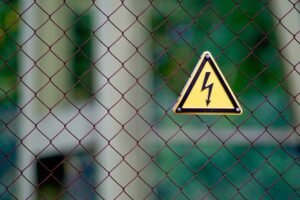Power Surges Explained!

The Importance of Surge Protection for Your Home
Surge protection is a crucial element in safeguarding your home and its electrical components from the damaging effects of power surges. Power surges often occur for a variety of reasons, such as lightning strikes, utility company issues, and even appliances in your home drawing excess power. It makes sense why house surge protectors are considered so important, right? When a power surge happens, it can cause irreparable damage to electronic devices, appliances, and even electrical system. The importance of surge protection truly cannot be overstated!
How Power Surges Occur
Power surges are temporary spikes in voltage that can last for only a few microseconds, yet they have the potential to wreak havoc on your home’s electrical system. They can enter your home through utility lines, telephone lines, and even from within your home through faulty wiring or faulty appliances.
The Dangers of Power Surges
Power surges can lead to the destruction of sensitive electronic devices, such as computers, TVs, and home entertainment systems. They can also damage appliances like refrigerators, washing machines, and air conditioners. Apart from the financial loss of having to replace these items, power surges pose a risk to your safety as they can cause electrical fires.
The Benefits of Whole Home Surge Protection
Whole home surge protection is a comprehensive solution designed to protect your entire electrical system from sudden voltage surges. Unlike individual surge protectors that are plugged into outlets, whole home surge protectors are installed at the main electrical panel, providing protection for all the circuits in your home.
Understanding the Risks of Power Surges
Understanding the risks of power surges is crucial in realizing the importance of whole home surge protection. As mentioned earlier, power surges can occur due to various factors, such as lightning strikes, utility company issues, and even internal factors like faulty wiring or appliances drawing excess power.
A power surge can result in significant damage and financial loss. Imagine losing your expensive electronic devices, appliances, and possibly even your entire electrical system due to a power surge. It can be a nightmare scenario, not to mention the potential safety hazards associated with electrical fires caused by power surges.
By investing in whole home surge protection, you can mitigate these risks and ensure the safety of your home and its electrical components.
The Role of Surge Protection Devices
Surge protection devices (SPDs) play a crucial role in whole home surge protection. These devices are designed to divert excess voltage away from your electrical system and safely dissipate it to the ground. They act as a barrier between your home and the surges, ensuring that your electrical devices and appliances are shielded from the damaging effects of power surges.
SPDs work by monitoring the level of voltage entering your home. When a surge is detected, the device activates and redirects the excess energy to the grounding system. This prevents the surge from reaching your electrical panel and subsequently, your appliances and devices. The benefit of whole home surge protection is it takes out the guesswork of protecting your home from the dangers that power surges can pose.
There are different types of SPDs available for whole home surge protection. One common type is the surge protector panel, which is installed at the main electrical panel of your home. This device provides protection for all the circuits wired to your electrical panel, safeguarding your entire home from power surges.
Another type of SPD is the surge protector outlet strip. These devices are installed at individual outlets and offer protection to the devices plugged into them. While these are beneficial for specific appliances or electronics, they do not provide comprehensive whole home protection.
Professional Installation
Proper installation by a professional electrician of whole home surge protection is crucial to ensure its effectiveness. It is recommended to hire a licensed electrician, such as those at Best Electrician Huntsville, to install surge protection devices at your main electrical panel. They have the knowledge and expertise to determine the optimal placement and wiring.
During the installation process, the electrician will assess your home’s electrical system, identify potential points of entry for power surges, and strategically install the surge protection devices as needed. They will also ensure that the devices are connected properly and grounded according to electrical safety standards. Once again, why take the risk of a power surge when you could be protected and have peace of mind instead.
Cost-Effective Solution
While whole home surge protection comes with an upfront cost, it is a cost-effective solution in the long run. Investing in surge protection devices can save you from expensive repairs or replacement of damaged appliances and electronics due to power surges. It also provides peace of mind, knowing that your home and its electrical components are well protected.
Additionally, some insurance companies offer discounts for homes that have whole-home surge protection installed. This reflects the recognized value of proactive measures in preventing costly electrical damage.
Conclusion
Whole home surge protection is an essential investment for every homeowner. It protects your electronics, appliances, and electrical system from the damaging effects of power surges. By understanding the risks of power surges and the benefits of surge protection devices, you can make an informed decision to safeguard your home’s electrical infrastructure. Remember to consult a licensed electrician for professional installation to ensure optimal protection and performance. With whole home surge protection in place, you can enjoy peace of mind knowing that your home and its electrical devices are well protected.

Types of Surge Protection Devices
When it comes to protecting your home from power surges, you have a few options to choose from. The two main categories of surge protection devices are individual surge protectors and whole-home surge protection systems. Let’s take a closer look at each.
Surge Protectors
Surge protectors, also known as power strips or surge suppressors, are devices that provide protection against power surges for individual appliances or electronics. They typically have multiple outlets and are designed to be plugged into a wall socket.
Surge protectors work by diverting excess voltage from a power surge into the ground, protecting the connected devices. They contain built-in circuitry that monitors the electrical flow and responds when a surge is detected. This quick reaction helps prevent the excess voltage from reaching your electronic devices and potentially damaging them.
While surge protectors are a cost-effective way to protect specific devices, they have limitations. They only provide protection for the devices directly plugged into them, meaning that other appliances or electronics in your home are still vulnerable to power surges. Additionally, surge protectors have a limited lifespan and need to be replaced every few years to maintain their effectiveness.
Whole-Home Surge Protection Systems
Surge protectors are commonly used to protect individual electronic devices or appliances from power surges. They are plug-in devices that are connected to the outlet and provide protection by diverting excess voltage away from the connected device.
While surge protectors are effective at protecting individual devices, they have their limitations. They only offer protection to the devices directly connected to them, leaving other devices in the home vulnerable to power surges. Additionally, surge protectors have a limited lifespan and need to be replaced periodically to maintain their effectiveness.
On the other hand, whole-home surge protection systems provide comprehensive protection for all the electrical devices and appliances in your home. These systems are installed at the main electrical panel and act as the first line of defense against power surges. They are designed to handle high-voltage surges and can handle larger surges than individual surge protectors.
By installing a whole-home surge protection system, you ensure that every device and appliance in your home is protected from power surges. This includes your HVAC systems, refrigerator, washer and dryer, computers, televisions, and other sensitive electronics.
Benefits of Whole-Home Surge Protection
Investing in whole-home surge protection offers several benefits over relying solely on individual surge protectors. Here are some reasons why you should consider installing a whole-home surge protection system:
Comprehensive Protection: With a whole-home surge protection system, every device and appliance in your home is safeguarded against power surges. This provides peace of mind, knowing that all your valuable electronics are protected.
Increased Lifespan of Appliances: Power surges can damage the sensitive circuitry in appliances and electronics, leading to premature failure. By preventing surges from reaching your devices, whole-home surge protection helps extend their lifespan.
Cost Savings: When a power surge damages your appliances, you may face expensive repairs or replacement costs. Whole-home surge protection helps prevent these costly situations, potentially saving you thousands of dollars in the long run.
Convenience: Unlike individual surge protectors that need to be installed on each device or outlet, a whole-home surge protection system is installed at the main electrical panel. This means you don’t have to worry about plugging and unplugging devices or managing multiple surge protectors.
Maintenance and Testing: Proper installation and regular maintenance are essential for ensuring the effectiveness of your whole-home surge protection system. However, maintenance and testing are usually simpler for whole-home surge protection systems compared to individual surge protectors. With individual surge protectors, you may need to periodically check and replace them, while a whole-home surge protection system usually requires less frequent maintenance.

